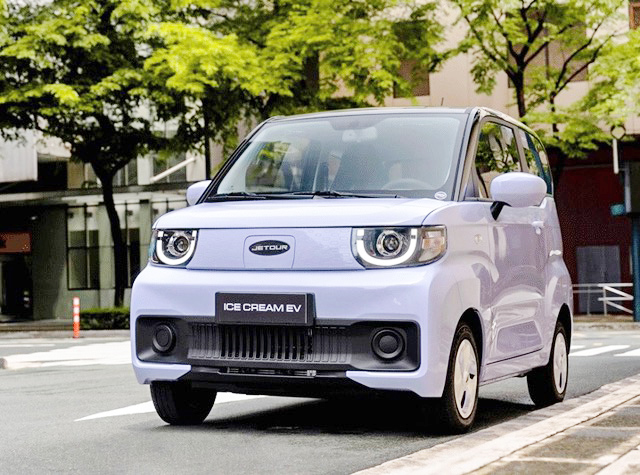If your electric vehicle is not on the Department of Energy’s list of “recognized EVs,” don’t expect to be exempted from the Unified Vehicular Volume Reduction Program or the number coding scheme.
Part of the Implementing Rules and Regulations of the Electric Vehicle Industry Development Act states that an EV should have at least one rechargeable energy storage — the battery pack — as power source that could propel the vehicle.
Last 3 November, the DoE issued an updated list of EV models that are not covered by the number coding scheme.
The list is a ready reference that traffic enforcers of the Metropolitan Manila Development Authority now use in identifying whether the EV model that an apprehended motorist owns (e.g., if it is classified as a plug-in electric hybrid vehicle, hybrid electric vehicle, battery “pure” electric vehicle or light electric vehicle) should be allowed on the road or not.
To encourage more Filipinos to own EVs, Republic Act 11697, also known as the EVIDA, has allowed the exemption of hybrids and pure EVs from the number coding scheme (a long-standing measure implemented to ease traffic in Metro Manila, which prohibits the use of vehicles on a specific day corresponding to their plate number).
Aside from the speedy registration processing that the law mandates, EV owners can also avail themselves of a discounted registration fee.
Master list
Under the DoE list, vehicle models are categorized into PHEVs, HEVs, BEVs and LEVs and classified further by their weight in kilograms.
EV car buyers can refer to this list — which is constantly being updated by the DoE — if they want to take advantage of the EVIDA’s “perks.” According to the EVIDA IRR, for an EV to be considered eligible, it must have at least one rechargeable energy storage (the battery pack) as power source to propel the vehicle.
Vehicles categorized under PHEV or HEV use two power sources: The gasoline engine and an electric motor that work in tandem or independently.
The switch between gasoline and electric mode usually happens automatically (controlled by the software), although in most models the driver may opt to drive purely on electric power as long as the battery pack has more than enough charge; otherwise the software will take over.
The ability to be plugged-in and be recharged into a standard electrical outlet or an EV charging station, is what differentiates a PHEV from an HEV.
This plug-in feature allows the driver to enjoy the PHEV’s electric mode much longer, especially since the battery pack in a PHEV is typically larger and heavier than what’s installed in an HEV.

(PHOTOGRAPH COURTESY OF JETOUR AUTO PH) The tiny Jetour Ice Cream hatchback EV is among the latest additions to the DoE’s growing list of recognized EVs.
In-between option
In a way, both PHEV and HEV are good in-between options for car buyers as they could still enjoy the benefits most electric cars provide when driving in electric-only mode.
At the same time, both types provide a sense of security for the driver because once the battery pack gets depleted and can no longer sustain electric-only mode, the gasoline engine takes over either to drive the vehicle or recharge the battery pack.
Both PHEV and HEV can also be recharged through regenerative braking. Regenerative braking happens when the vehicle decelerates or suddenly stops and the kinetic energy, that is otherwise lost as heat in the brake pads and rotors, is utilized to recharge the battery pack.
Unlike PHEVs and HEVs, BEVs do not have a gasoline engine which is a source of air pollution. All the energy needed to run the BEV comes from the battery pack which can be recharged from standard electrical outlets.
Most BEVs are capable of fast charging which takes about 30 minutes to recharge the battery to 80 percent. In some instances, it takes 10 hours to charge a fully depleted battery, though charging time depends on certain factors like the type of battery charger used, the kWh rating of the battery pack or the volt/amp of the electrical source.
Lastly, the LEVs mentioned in the DoE list are those EVs used in micro-mobility. Electric scooters, electric bicycles, electric personal transport and other similar vehicles weighing less than 50 kg fall under the LEVs’ category.
EV car buyers should be wary of dealers advertising their models as exempt from the number coding scheme.
While these so-called “mild hybrid” vehicles feature an electric motor, it still can’t be utilized to propel them. Unfortunately, owners of these vehicles won’t be able to benefit from the incentives provided by the EVIDA.
Thus, EV car buyers are advised to check the updated list of the DoE and see if the vehicle model they intend to buy is on it.
Check out the master list at doe.gov.ph.

















